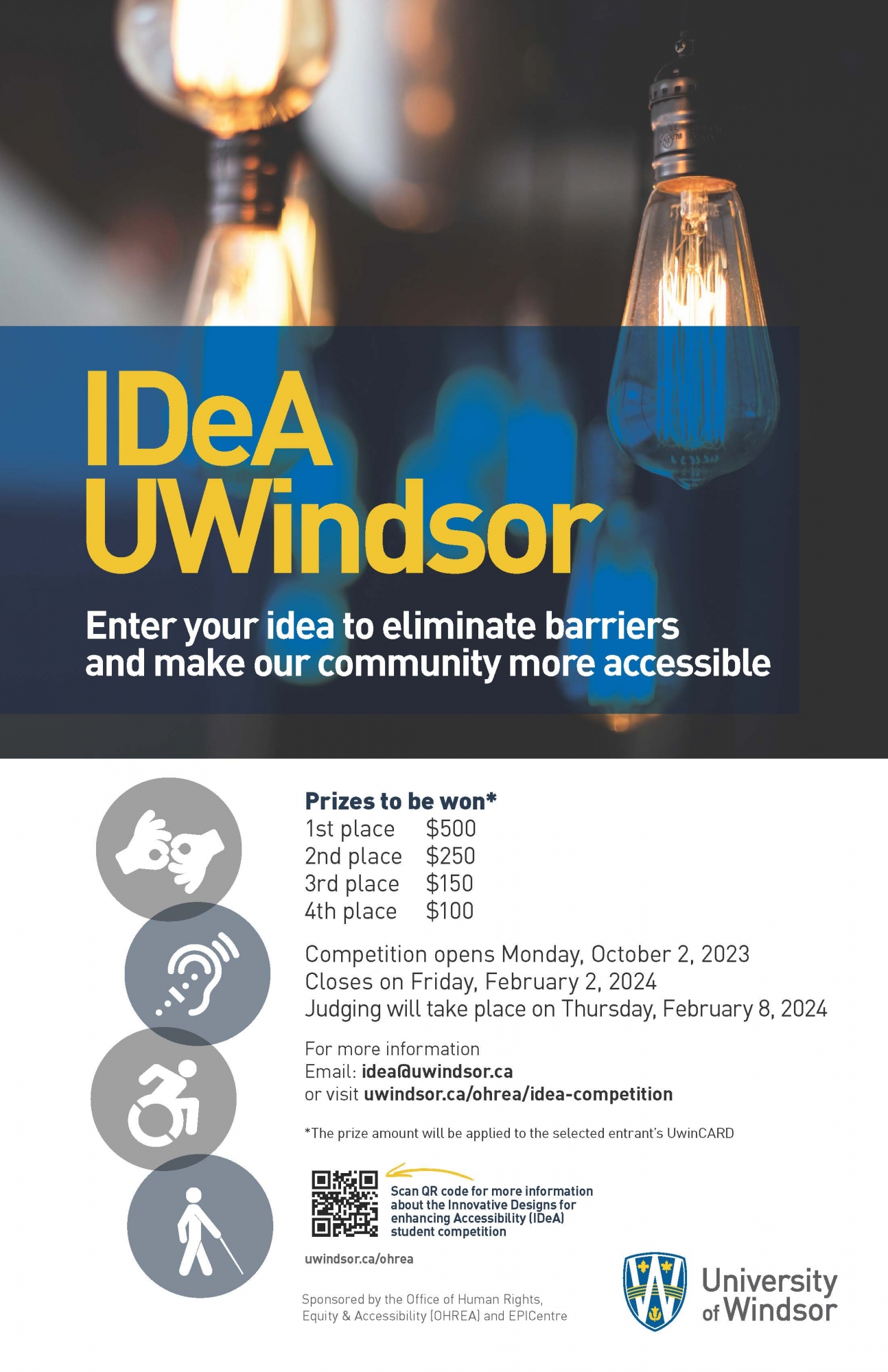The IDeA Competition
The Office of Human Rights, Equity and Accessibility (OHREA) is pleased to announce the Innovative Designs for Enhancing Accessibility (IDeA) student competition for the 2023-2024 academic year. We are grateful to the Entrepreneurship Practice and Innovation Centre (EPiCentre) at the University of Windsor for their support of this competition.
Watch a short video on the IDeA Competition!
Watch the 2024 IDeA Competition Kick-Off Information Session. (UWindsor ID required to view)
Each year, the University of Windsor hosts a student competition to engage creative minds to develop inclusive, innovative, cost-effective, and practical ideas to solve accessibility-related barriers. Entrants are not required to create a physical product, campaign, device, etc… Just present your original idea in the best way possible! Students can enter as a group or as an individual submission. Ideas created and developed as a part of coursework may also be entered.
Prizes to be won*
First Place - $500
Second Place - $250
Third Place - $150
Fourth Place - $100
*The prize amount will be applied to the selected Entrant’s UwinCARD.
How it works:
- The IDEA. Students develop an original idea to potentially prevent, eliminate, or reduce an accessibility barrier(s).
- The SUBMISSION. Entrant(s) submit a cover letter (see “Submission Formats”) and a submission by February 2, 2024. The submission could be a PDF, video, website, or an alternate electronic format (more details in “Entering Contest” section).
- The PITCH. On February 8, 2024, entrants will have up to 15 minutes present to a judging panel, followed by questions from the judges.
Eligibility
- You are enrolled as a student (full or part-time) at the University of Windsor in either the Fall 2023 semester and/or the Winter 2024 semester in any program of study (undergraduate, graduate, professional degree)
- You are an individual or part of a group or team (all group/team members who contribute to the IDeA must enter together)
- Your IDeA can be part of your coursework (an in-class assignment, research, or thesis project)
Find out more about the competition:
- Compeition Objective: Address Accessibility Barriers
- Entering the Contest
- Rules and Regulations
- Submission Formats
- Previous Competition Winners
Need assistance?
If you have any questions or need assistance with submitting to the competition, please contact the IDeA Coordinator at idea@uwindsor.ca

